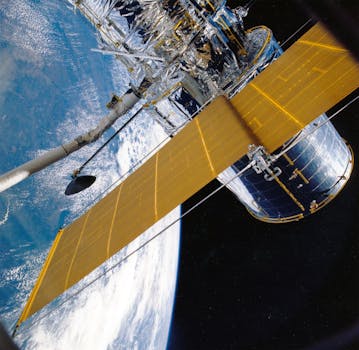
Future of Satellites: Revolutionizing Global Communication and Exploration
Future of satellites is an exciting and rapidly evolving field, with new technologies and innovations emerging every year. The use of satellites has become an essential part of our daily lives, from providing global communication and navigation to enabling space exploration and scientific research. As we look to the future, it is clear that satellites will play an increasingly important role in shaping our world and beyond.
Advancements in Satellite Technology
Recent advancements in satellite technology have been remarkable, with significant improvements in areas such as propulsion systems, power generation, and communication equipment. One of the most notable developments is the use of small satellites, also known as CubeSats, which are smaller, cheaper, and more efficient than traditional satellites. These small satellites have opened up new opportunities for companies and organizations to launch their own satellites, enabling a wider range of applications and services.
Another area of significant advancement is in the field of satellite propulsion systems. New technologies such as electric propulsion and advanced ion engines are being developed, which will enable satellites to travel farther and faster than ever before. This will be particularly important for deep space missions, where traditional propulsion systems are limited by their fuel capacity and efficiency.
Applications of Satellites
Satellites have a wide range of applications, from providing global communication and navigation to enabling space exploration and scientific research. One of the most significant applications of satellites is in the field of global communication, where they are used to transmit data, voice, and video signals around the world. This has enabled the creation of global networks, connecting people and businesses across the globe.
Satellites are also used for navigation, providing location information and timing signals that are essential for many applications, including aviation, maritime, and land transportation. In addition, satellites are used for weather forecasting, climate monitoring, and disaster response, providing critical information and services that help to protect people and property.
Future of Satellite Exploration
The future of satellite exploration holds immense promise, with plans to send satellites to the Moon, Mars, and beyond. One of the most exciting developments is the planned launch of the James Webb Space Telescope, which will enable scientists to study the universe in unprecedented detail. The telescope will be used to study the formation of stars and galaxies, as well as the potential for life on other planets.
Another area of significant interest is the exploration of the Moon and Mars, with plans to send satellites and even humans to these destinations in the coming years. The European Space Agency’s Lunar Lander mission, for example, will send a satellite to the Moon’s south pole, where it will search for water ice and other resources. Similarly, NASA’s Mars 2020 mission will send a rover to Mars, where it will search for signs of life and study the planet’s geology and climate.






